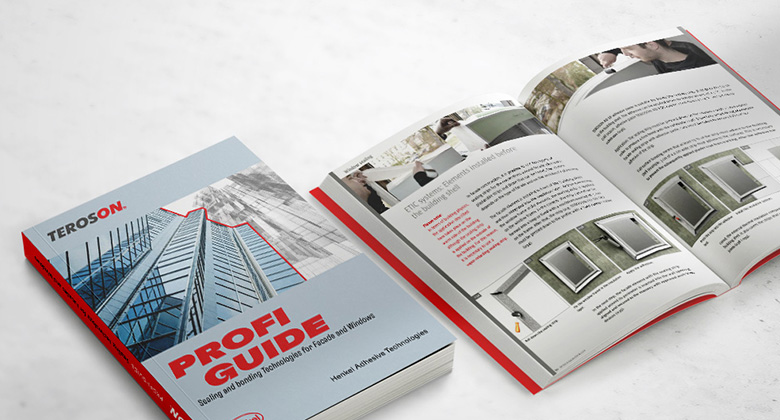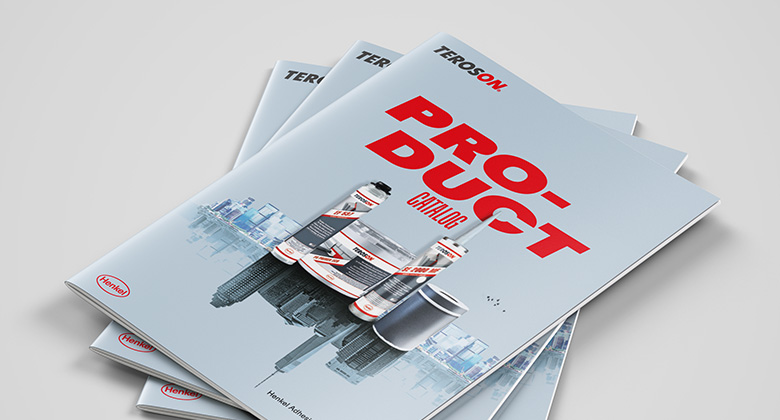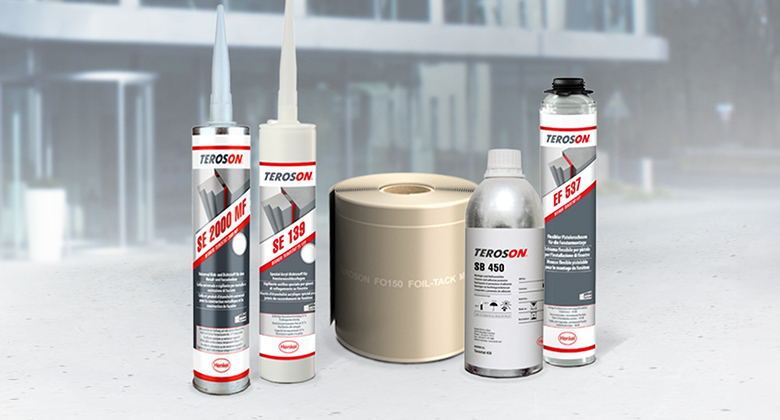Sealing films &
sealing tapes
- ‘Textile’: So-called fleece-coated films with capillary water-drawing effect for subsequent plaster adhesion – mainly in the area of perforated windows (solid facades) or
- ‘Plastic’: so-called veneerable foils with a smooth surface for ‘shadow gaps’ in the curtain wall.
In addition to the composition, the diffusion behaviour of the foil systems is decisive for the structural position. If these are
- installed on the cold building side and therefore on the outside, they must be ‘open to water vapour diffusion’. If foil systems
- are used on the warm side of the building, ‘water vapour diffusion-inhibiting’ or ‘vapour-tight’ foils must be installed.
The planned construction and the necessary film guidance derived from it determine which adhesive equipment is to be used for the films. On frames and masonry.
The film can be clamped, glued or mechanically fixed to the frame. If it is glued to the frame, it is equipped with a self-adhesive mounting strip (SK1).
The use of adhesives is crucial and almost essential, especially on brickwork or other substrates. The film can have a single self-adhesive strip, be fully self-adhesive or be installed with a wet adhesive system.
- The full-surface self-adhesive films can be applied very quickly and efficiently to smooth substrates.
- If the surface is uneven and not ideally prepared, we strongly recommend using pastes. Paste application is also the most universal and safest installation solution, as it is best able to forgive and compensate for imponderables in day-to-day construction work. In addition, a wet adhesive system is much more robust against subsequent tensile and shear stresses when cured.
However, the sealing film systems are not always the first choice, as the nature of the building (e.g. clinker brick/exposed brickwork on the outside) in renovation and listed buildings precludes the product performance and cost-effectiveness of these sealing film systems.
An overview of a few advantages and disadvantages of sealing film systems:
Advantages
- For all solid substrates (with corresponding paste system)
- For large joint tolerances
- Immediately waterproof (with self-adhesive systems)
- No maintenance joint
- Safe corner design
- Ideal sd-value equipment (inside or outside)
- Perfect for pre-wall installation
- Pre-assembly possible in the hall
- No permanent UV resistance in direct weathering
- Cannot be used with existing exposed brickwork (renovation)
- Additional plastering work necessary in case of renovation
This might also interest you

New TEROSON Profi Guide
The TEROSON Profi-Guide is the ultimate, easy-to-read reference work for waterproofing professionals.

TEROSON product range
Download the TEROSON product programme and get detailed information about our products.

Products at a glance
From waterproofing to coating: Discover TEROSON's comprehensive range of products at a glance.
Do you need technical advice?
Our TEROSON team is at your disposal.
Get in touch with us!